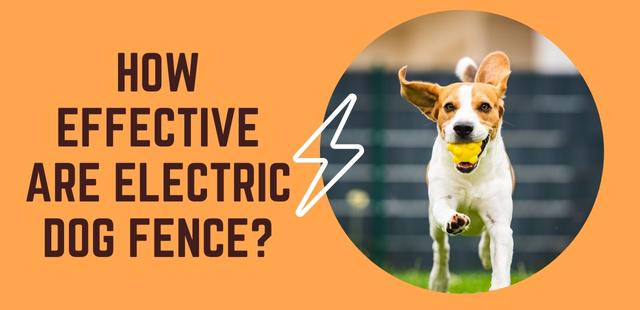
Being a dog owner I was doing deep research on electric fences and was curious to know how effective are electric dog fences. I have just gone through all kinds of fences to give my genuine opinion on this, let’s get started.
How effective are electric dog fences?
The previous studies that examined the deterrence effects on electric fencing have used high voltages that are variable but without sufficient justification.
In this research, I set out to determine the necessary voltage needed for dissuading various animal species that differ in body size and the causes of the variations.
A few small electrical fences were constructed in the forest, and attractants were set up inside and outside the fence.
The responses to these attractants were recorded using a sensor camera (i.e., camera trap), and the likelihood of agreement within the fence was studied on seven mammals.
Although large-bodied animals such as wild boars and sika deer were not allowed to enter the fence, even at a frequency of 1500 V. smaller mammals like raccoons and badgers needed 10000 V to be effective.
The electric dog fence firm
Which is better? Wired or wireless dog fence?
A fence for your pet can provide a different environment stimulating for them when you can’t take them to. Below are the various dog fences you should consider in deciding the best one for your household.
Types of Dog Fences :
Selecting the best kind of fence will depend on the needs of your dog, your property, and your budget.
Fences for dogs made of wood can accommodate the features you find attractive.
1: Solid Barrier Fe
Vinyl, metal, and various other solid materials are ideal for dogs who are easily distracted by other pets, children, or even dogs in the vicinity since they aren’t able to see through them.
2: Electric Dog Fences
They are a popular choice for owners who wish to maintain the beauty of their landscape and also benefit from the possibility of containing their pets without the additional costs of construction or labor involved in the construction of the fence.
How effective are electric dog fences? But the electric fence isn’t in the best interests of your dog’s physical and mental well-being.
There are two kinds of electric dog fences: wireless and in-ground.
Wireless dog fences for dogs tend to be very easy to install. Underground electric fencing is constructed by digging a trench and then digging the wire.
3: Virtual GPS Fence
This kind of dog fence is more affordable than traditional barrier fences and is simple to set up.
4: Indoor Dog Fences
Many dogs prefer to be indoors and don’t require fences to feel secure or receive the exercise they require.
With the dimensions of your house or backyard (if there is one) and your capability to bring your dog with you on adventures fencing for dogs might not be required.
How to Install an Electric Dog Fence?
Electronic dog fencing is a fantastic method to give your pet the freedom and security to explore your yard and save you the expense of building a fence or continually filling the holes that dogs dig.
Installing one is simpler than you think. It requires a few minutes, some thinking, and a few basic tools and materials.
Here’s the information you’ll need for this undertaking:
TOOLS & MATERIALS
If you are taking on this DIY task, equip yourself with the right safety equipment.
SAFETY GEAR
STEP 1:
Install a fence transmitter. Begin by determining the best site for the fence transmitter.
It should be kept out of the elements and in an air-conditioned, dry area. Garages, basements and closets, and sheds are all good alternatives.
After you’ve determined the location of your transmitter, attach it to an area using the mounting hardware.
Once secure, choose the most effective route for the boundary wire into your backyard. Windows are a good choice.
You could also make a 1/8″ hole into the wall. Whichever route you take, ensure the hole is free of all utilities and doesn’t pull or cut the wire.
STEP 2:
Draw a boundary wire. It’s now time to trace the boundaries wire. Keep in mind that the wire must begin and finish with the transmitter.
Mark out your route using markers. Make gentle turns around corners to ensure you don’t interrupt the connection.
After the wire is in place, Test the system before placing it in the ground, and then check to make sure that the wire isn’t stuck in any way.
STEP 3:
Connect wires. Connect the boundary wire to the fence transmitter, and then strip the ends by about one-half inch if they’re already strapped.
Inject the wires into the terminals and connect the power adapter to the power jack and the electrical outlet.
You’ll know you’ve succeeded when you get the power light on, and the loop indicator lights turn on.
STEP 4:
Prepare collar. Set up the receiver of the collar according to the instructions provided by the manufacturer. Set boundaries, alter the transmitter’s range, and test the collar’s receiver.
STEP 5:
Set up boundary wire. Make a trench from one” to 3″ deep across your boundary. Install the wire into the trench and leave a small amount of room for temperature fluctuations.
To avoid damaging it, insert the wire through the trench. Fill in the trench, and place your flags along your borderline, removing markers as you move.



